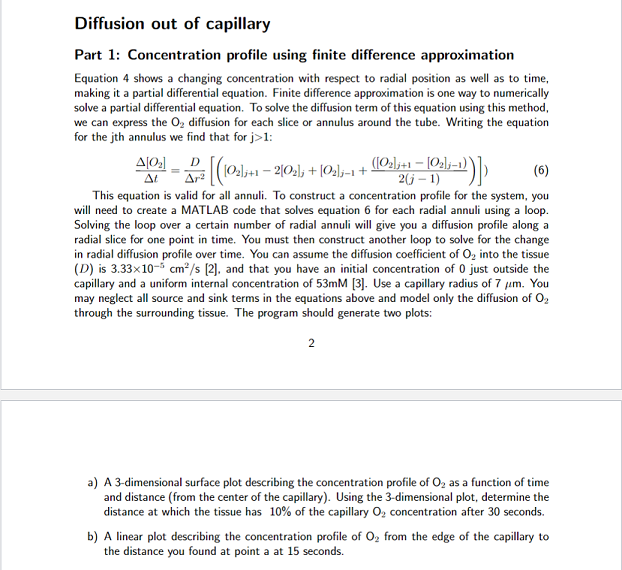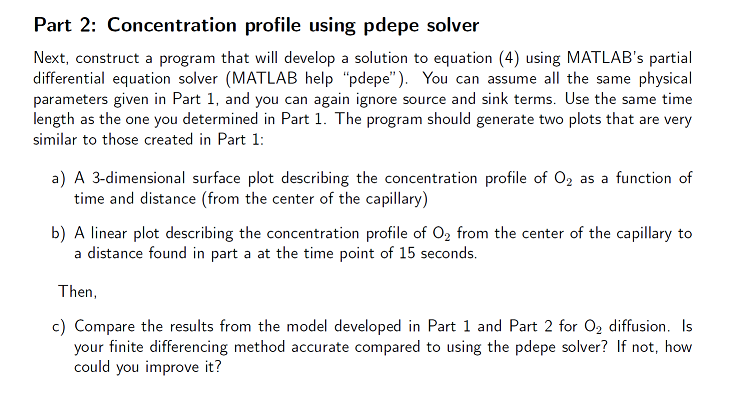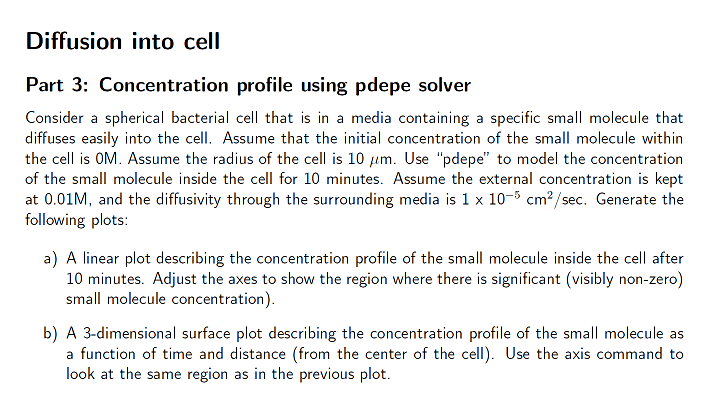Answered step by step
Verified Expert Solution
Question
1 Approved Answer
Diffusion out of capillary Part 1: Concentration profile using finite difference approximation Equation 4 shows a changing concentration with respect to radial position as well




Step by Step Solution
There are 3 Steps involved in it
Step: 1

Get Instant Access to Expert-Tailored Solutions
See step-by-step solutions with expert insights and AI powered tools for academic success
Step: 2

Step: 3

Ace Your Homework with AI
Get the answers you need in no time with our AI-driven, step-by-step assistance
Get Started


